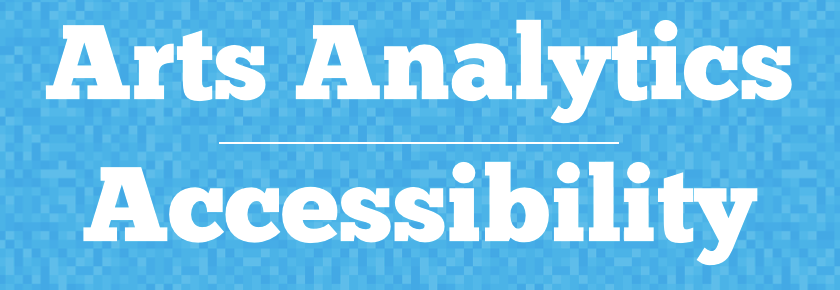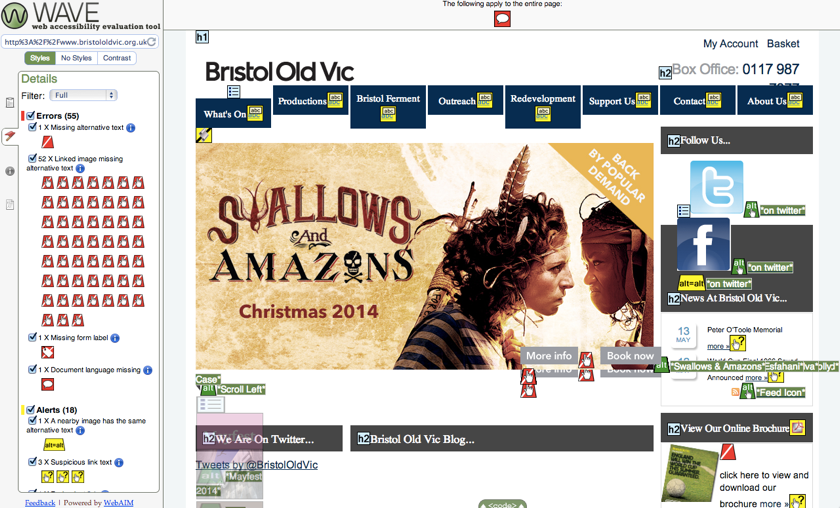Last week I put out a report based on a survey of arts organisations, having asked them what effect changes to Facebook have had on their respective Facebook Pages. You can download it from the One Further website.
I was pretty pleased with how it went. Within a pretty short period of time, I managed to gather some information around an issue and present it to people who will hopefully find it useful. That was the main job I wanted to do. It also gave my new company a small profile boost and helped earn me some new names for my mailing list.
To that extent, I’d consider it a success. However, I’m very aware of room for improvement. If I’m planning to do more quick surveys along the same lines (and I am) then they should build on this one. Stopping to consider lessons learned is a good thing to do whether things went well or not and feedback from others can help immeasurably.
Thing is, people tend to be far too polite about these things when some candid (shout out to Creativity, Inc) feedback would actually be very welcome. For that reason, I’m going to kick things off.
If you read the report or contributed to the survey then please let me know what could be improved via the comments. I’d be very grateful.
Here’s how I think things could be improved.
The survey
It could’ve done with more contributors. 48 wasn’t bad and, considering the lack of time and budget behind it, I think I did well to push it out to as many people as I did. Still, the next one should have more contributors.
The survey’s format was fine but could have been better. Google Forms aren’t bad as far as they go but next time I’ll probably try something a little more swish.
I tried to keep the survey short so as not to put people off that means that plenty of good questions went unasked:
- Those organisations that have seen organic reach increase – are they buying Promoted Posts? There’s a halo effect that could be causing the organic uplift.
- When people say they’ve seen an increase or decrease, how much are we talking about? It could be whopping or an entirely arbitrary little flicker.
- What types of content are organisations posting and does that correlate to the popularity of the organisations’ Pages?
- How much budget are organisations putting behind Promoted Posts?
- For those that will be using Promoted Posts sparingly, in what circumstances will they be using them. Will they cutting back on any other costs?
It’s a tricky balance to get right and I’m not sure I nailed it this time round.
The report
I was relatively happy with the layout and styling but it was just knocked together in Pages and is really very basic. Maybe there’s something better I could’ve done.
Is a PDF document the best format? I tend to find that those things pile up in random folders on my laptop. Maybe I’ll look at other options for getting the results to people. I’d appreciate thoughts on that one.
I tried to make the format of the report as clear as possible but, as always with these things, if I’d had time I’d have made it shorter. Again, thoughts and suggestions welcome.
Other things
This was a business activity so, as well as creating a good survey and report, a secondary consideration was how I could get a bit of a profile boost for my new business, One Further. I did achieve that to some extent but I think I could’ve done a few things a little better:
- I didn’t track how much time I spent on it, which seems a bit silly now.
- I did ok at getting the message out and I’m very grateful for the Guardian piece but I could possibly do better on the distribution side of things.
- Again, is a downloadable PDF really best? Next time perhaps a presentation on SlideShare embedded on my site would be better. I could maybe give the PDF away for people who give me their email address.
- Maybe I could present the results in a few different ways. I’m trying not to use the word ‘webinar’ here…
Onward
So there we go. Thanks for bearing with the introspection. Anything more to add? Hit me with it – I can take it.

